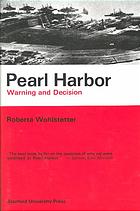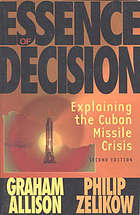pros and cons of organizational culture
read to prepare yourselves for session 14
Choo, C. W. (2006).
The knowing organization: How organizations use information to construct meaning, create knowledge, and make decisions.
New York: Oxford University Press.
Chapter 3,
"The management of ambiguity - Organizations as sense-making communities."
75-125

Wohlstetter, R. (1962).
Pearl Harbor; warning and decision.
Stanford, Calif: Stanford University Press
pages vii-ix and 382-401

Allison, G. T. (1971).
Essence of decision: Explaining the Cuban missile crisis.
Boston: Little, Brown
read pages v-viii, 1-9, and 243-263; skim pages 10-38, 87-100, 144-184, and 264-277
things we'll talk about
- using Wohlstetter and Allison as examples, we'll reflect on the benefits and disadvantages of organizational culture
- why is an organizational culture necessary?
- does it help organizations orient their goals and prioritize?
- does it make organizations vulnerable to stagnation?
- think of companies and organizations that refused to change their organizational culture and suffered as a result
If the session will include an in-class exercise, it will be noted here.
[top]


